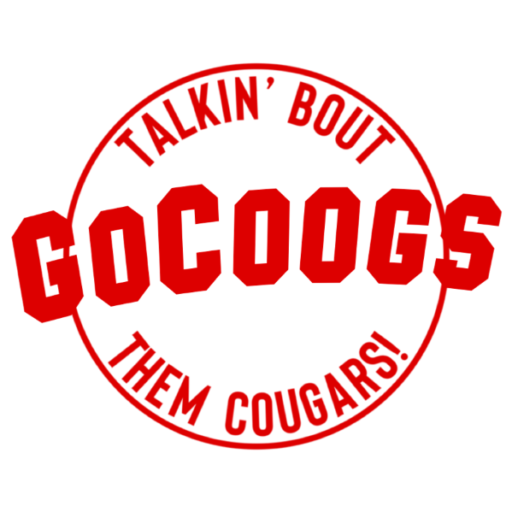UH fans were divided Friday night over the targeting call on Gleson Sprewell in the 3rd quarter. As written in the rules book, it was a targeting foul.
On 4th and 10, UH had stopped a Memphis drive in the red zone. But a (seemingly) late flag flew in to disrupt the entire sequence. It was a targeting call on the tackle to break up the 4th-down pass.
Here’s the play from the ESPN2 broadcast:
The replay official must determine if the defender made forcible contact with the crown of his helmet. Despite what many people believe, there is nothing in the rule that says it must be helmet to helmet. And defenders can hit with their helmets, despite what others might believe. The portion of the NCAA Rules Book regarding targeting rule is long – about 460 words – but it is easy to understand what is allowed and what is not.
Here are the parts of the rule that relate to Gleson’s hit:
Targeting and Making Forcible Contact With the Crown of the Helmet
ARTICLE 3. No player shall target and make forcible contact against an opponent with the crown of their helmet. The crown of the helmet is the portion of the helmet above the level of the top of the facemask. This foul requires that there be at least one indicator of targeting (See Note 1 below).
• Leading with helmet, shoulder, forearm, fist, hand or elbow to attack with forcible contact at the head or neck area.
• Lowering the head before attacking by initiating forcible contact with the crown of the helmet.
We can debate the first of these two indicators but not the second. The NCAA’s definition of “crown of the helmet” is the portion of the helmet above the facemask. Sprewell lowered his head before initiating forcible contact with the crown of his helmet. It’s an ejection.
Had he picked his head up and hit him with the facemask, it should not be an ejection, according to the rule book. The targeting rule is there to protect players – including the defender. He is arguably in more danger on that play than the receiver. Either way, no one should be paralyzed for life or injured for life due to a college football game.
Targeting is a broad rule meant to deter these hits. These players have played with targeting rules since they started football – they understand the rules. Unfortunately, college football announcers are inconsistent in explaining what constitutes a targeting violation, and their on-air rules experts aren’t any better.
To see the entire Targeting Rule, here it is byitself – targeting rule (9-3 & 9-4) – or find the entire 2021 NCAA Football Rules Book here.
Unsportsmanlike penalty on Dana Holgorsen
Now, the penalty on Dana Holgorsen after the targeting replay leaves me with mixed emotions. Was it overkill by the refs or did Dana cross the line? Here’s how it went down from the ESPN2 view:
In 2021, a football coach uses foul language. Many use it a lot and every ref knows that. Dana believed the targeting was wrong and he reacted as any coach reasonably would.
But as he was walking off the field, Dana clearly dropped an F-bomb. And it appears from the video that he said “F-you MFers” and twisted his head back towards the ref for the second part. That’s getting called 100/100 times. Every coach knows that.
A referee needs to let a coach blow off steam after a targeting replay goes against him, but Dana lost control of his emotions for a bit. A head coach cannot compound his team’s problems after two penalties and an INT on your previous offensive possession, and two 15-yard personal fouls, and an ejection on the drive currently taking place. Memphis scored their only touchdown of the game on the play after the targeting and the unsportsmanlike call.
![]()

